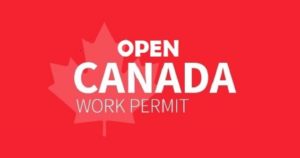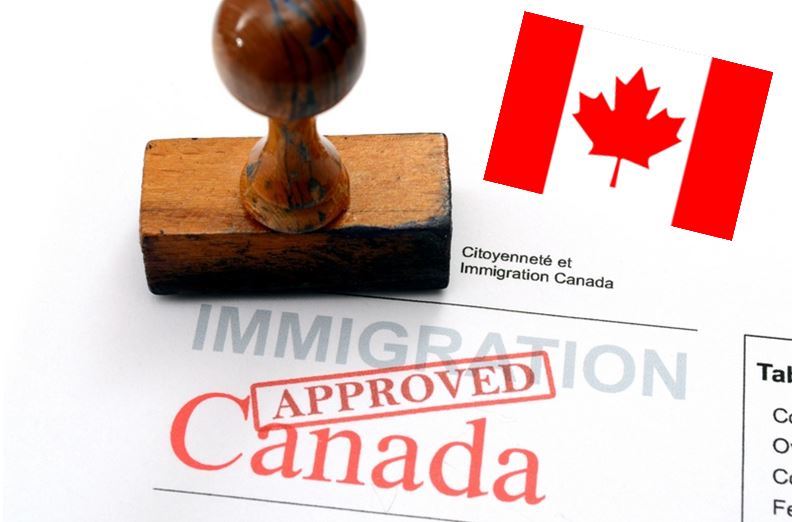Work Visa in Canada 2024

Work Visa in Canada 2024: A Comprehensive Guide
Introduction
Canada has long been a preferred destination for individuals seeking work opportunities due to its robust economy, multicultural society, and high quality of life. In 2024, Canada continues to welcome skilled workers, professionals, and temporary workers from all over the world to contribute to its thriving job market. The country offers a variety of work visa options tailored to different categories of workers, ranging from temporary employment permits to pathways that may lead to permanent residency. This guide provides an in-depth look at the work visa options available in Canada in 2024, including application procedures, eligibility criteria, and key considerations for prospective applicants.
Overview of Work Visa Options & Work Visa in Canada 2024
Canada’s work visa options fall into two main categories: Temporary Work Permits and Permanent Residency Programs for skilled workers. The choice of visa depends on the applicant’s qualifications, job offer, and long-term goals. Here’s a detailed breakdown of these categories:
- Temporary Work Permits
- Temporary Foreign Worker Program (TFWP)
- International Mobility Program (IMP)
- Open Work Permits
- Permanent Residency Pathways
- Express Entry: Federal Skilled Worker Program (FSWP)
- Provincial Nominee Programs (PNPs)
- Atlantic Immigration Pilot Program (AIPP)
- Quebec Skilled Worker Program (QSWP)
1. Temporary Work Permits& Work Visa in Canada 2024
These permits are usually tied to a particular employer or job. Here are the primary options for temporary work permits:
Temporary Foreign Worker Program (TFWP)
The Temporary Foreign Worker Program (TFWP) enables Canadian employers to hire foreign nationals to fill labor shortages when qualified Canadians or permanent residents are not available. The TFWP is designed to protect Canadian jobs and workers, ensuring that foreign nationals are employed under fair conditions.
Key Features of TFWP:
- Labour Market Impact Assessment (LMIA): Most employers must obtain a positive LMIA before hiring a foreign worker. An LMIA is a document issued by Employment and Social Development Canada (ESDC) confirming that there is a need for a foreign worker to fill the job and that no Canadian worker is available.
- Employer-Specific Work Permits: Work permits under the TFWP are usually employer-specific, meaning they are only valid for the employer and job specified in the LMIA application.
Application Process:
- Obtain a Job Offer: Applicants must have a valid job offer from a Canadian employer.
- LMIA Approval: The employer must apply for an LMIA from ESDC and receive a positive result.
- Submit Work Permit Application: After obtaining a positive LMIA, the applicant can apply for a work permit. This process usually involves submitting documents such as the job offer letter, LMIA, proof of qualifications, and proof of financial support.
- Processing Time: The processing time varies depending on the applicant’s country of residence but generally takes several weeks.

International Mobility Program (IMP): Work Visa in Canada 2024
This program includes work permits for categories like intra-company transferees, international students on post-graduate work permits, and participants in international trade agreements (e.g., the Canada-United States-Mexico Agreement, CUSMA).
Key Features of IMP: Work Visa in Canada 2024
- Exempt from LMIA: Unlike the TFWP, the IMP does not require an LMIA, which simplifies the hiring process.
- Open to Various Categories: Includes work permits for intra-company transferees, professionals under trade agreements, and youth mobility programs like International Experience Canada (IEC).
Application Process:
- Job Offer: The foreign worker must have a job offer from a Canadian employer.
- Submit Application: The applicant must submit a work permit application, including the job offer, proof of qualifications, and other required documents.
- Processing Time: The processing time varies based on the category and applicant’s location.
Open Work Permits
Open Work Permits are not job-specific, allowing the holder to work for any employer in Canada. This type of permit is particularly beneficial for spouses of skilled workers or international students, as well as for participants in the IEC.
Common Types of Open Work Permits: Work Visa in Canada 2024
- Spousal Open Work Permit: Available to spouses or common-law partners of skilled workers or international students in Canada.
- PGWP: Graduates from Public schools in Canada
- IEC Program: Offers open work permits to young people (usually aged 18-35) from participating countries under the Working Holiday, Young Professionals, or International Co-op categories.
2. Permanent Residency Pathways for Skilled Workers
For individuals who wish to live and work in Canada permanently, several immigration pathways are available. These programs often prioritize skilled workers who have the potential to contribute to Canada’s economy.
Express Entry: Federal Skilled Worker Program (FSWP)
The Express Entry system is a points-based immigration pathway that selects candidates for permanent residency based on factors such as age, education, work experience, language proficiency, and adaptability.
Key Features of FSWP: Work Visa in Canada 2024
- Eligibility: Requires at least one year of continuous full-time skilled work experience, a minimum language proficiency score (IELTS or CELPIP), and a valid educational credential assessment (ECA) for foreign education.
- Comprehensive Ranking System (CRS): Candidates are ranked using the CRS, which awards points based on factors like age, education, work experience, and language skills. Periodically, the highest-ranking candidates are invited to apply for permanent residency.
- Processing Time: The typical processing time for Express Entry applications is six months or less once an Invitation to Apply (ITA) is received.
Provincial Nominee Programs (PNPs): Work Visa in Canada 2024
Canada’s provinces and territories operate their own Provincial Nominee Programs (PNPs) to address specific labor market needs. PNPs allow provinces to nominate foreign workers for permanent residency based on their skills, experience, and potential to contribute to the local economy.

Key Features of PNPs: Work Visa in Canada 2024
- Employer-Sponsored Pathways: Many PNPs include streams that require a job offer from a provincial employer.
- Express Entry Linked: Some PNPs are aligned with the Express Entry system, offering faster processing times for nominees.
- Application Process: Applicants typically apply to the province first. If nominated, they can apply to the federal government for permanent residency.
Atlantic Immigration Pilot Program (AIPP)
The Atlantic Immigration Pilot Program (AIPP) targets skilled workers and international graduates who wish to settle in the Atlantic provinces (New Brunswick, Newfoundland and Labrador, Nova Scotia, and Prince Edward Island).
Key Features of AIPP: Work Visa in Canada 2024
- Job Offer Required: Applicants must have a job offer from a designated employer in one of the Atlantic provinces.
- Settlement Plan: Applicants must work with a designated settlement service provider to develop a settlement plan, which helps ensure successful integration into the community.
Quebec Skilled Worker Program (QSWP)
Quebec operates its own immigration program, the Quebec Skilled Worker Program (QSWP), which selects candidates based on a points-based system.
Key Features of QSWP: Work Visa in Canada 2024
- Selection Grid: Applicants are assessed based on factors like education, work experience, age, language proficiency (French and English), and family in Quebec.
- Certificate of Selection: Successful applicants receive a Quebec Selection Certificate (CSQ) and can then apply to the federal government for permanent residency.
Tips for a Successful Work Visa Application in 2024
- Start Early: The application process for work permits or permanent residency can be lengthy, so it is crucial to start early and gather all necessary documentation.
- Prepare for Language Tests: For most visa categories, language proficiency in English or French is essential. Prepare and take recognized tests such as IELTS, CELPIP, or TEF.
- Get Credential Assessments: If you have foreign educational qualifications, obtain an Educational Credential Assessment (ECA) from an approved organization.
- Research Employers: For employer-specific work permits, research Canadian employers in your field and understand their hiring processes. Networking and job search platforms like Job Bank, Indeed, and LinkedIn are valuable resources.
- Seek Professional Advice: Consider consulting with a licensed immigration consultant or lawyer to ensure your application is complete and meets all the requirements.
Conclusion
Canada’s work visa system in 2024 offers diverse options to suit different types of workers, from temporary work permits to permanent residency pathways for skilled professionals. The choice of visa depends on factors like job offers, qualifications, work experience, and long-term goals. Understanding the various programs, eligibility criteria, and application processes is key to a successful application. As Canada continues to welcome foreign workers to contribute to its economy and society, being well-prepared and informed can make the journey to working in Canada a smooth and rewarding experience.
In case, if you need help with Work Visa in Canada or other immigration services in 2024, please fill in application below or contact us directly.

